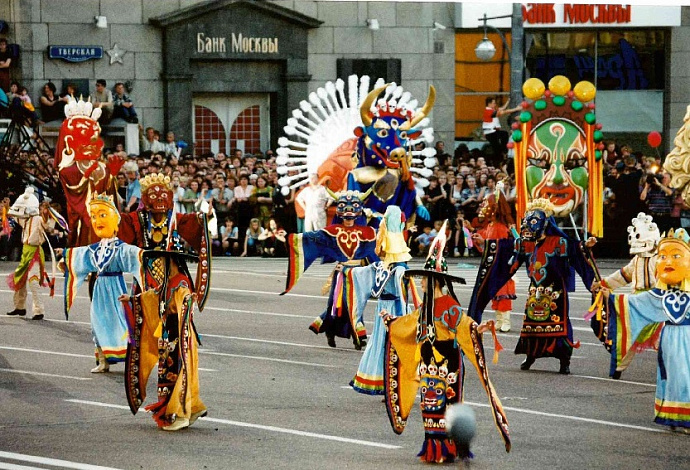

The Chinese do not know of a carnival in the customary sense of this word. In the extreme antiquity, in the days of winter solstice the men dressed up as animals and scudded over the trees, chasing women. We have but very scarce knowledge of that holiday, but even from those scrappy data that reached us it is easy to notice the similarity between those wild orgies and the European carnival, as though many centuries ago there existed some general Eurasian feast of seeing off winter and welcoming spring.
Just as the European countries have the custom of burning the carnival scarecrow, in the temples of China they burn a huge fantastic monster, which symbolizes woe, pain and fear.
One part of the feast is a procession organized in honor of the birthday of some of the local deities and attended by all members of the community. The procession is convoyed by vagrant musicians and actors, who play comic sketches, often of not very decent character. It might seem that provocative dancing is not quite appropriate for a religious procession, however, according to the popular belief it conjures away evil spirits, whereas laughter dissipates nightmares.
||e most spectacular moment of the procession is the dance of fantastic animals, a dragon, a unicorn and a lion, performed by masked masters of martial arts. The dragon coils, trying to grab a pearl fixed before his eyes, whereas the lion writhes on the ground, playing with a ball. The Chinese praise the Dragon as the spirit of water, summoning him in times of drought and ascribing to him the power over clouds and rain. It is a creature with a snake body, tiger claws, buffalo horns and fins and scales of a fish. One of the versions of its origin says that the Chinese dragon combined the animals that once used to be totems of different tribes. The Unicorn is a fairy creature that is told to bring newborn children. The image of the Lion came to China from India, being one of the most important animal symbols in Buddhism. According to a legend, the Lion is also endowed with exorcist powers. During the time of reign of the Song dynasty the picture of this fantastic animal - sometimes black and sometimes colored -became to symbolize the woman: in the opinion of the Chinese the howl of a jealous wife resembles the growling of a lion.